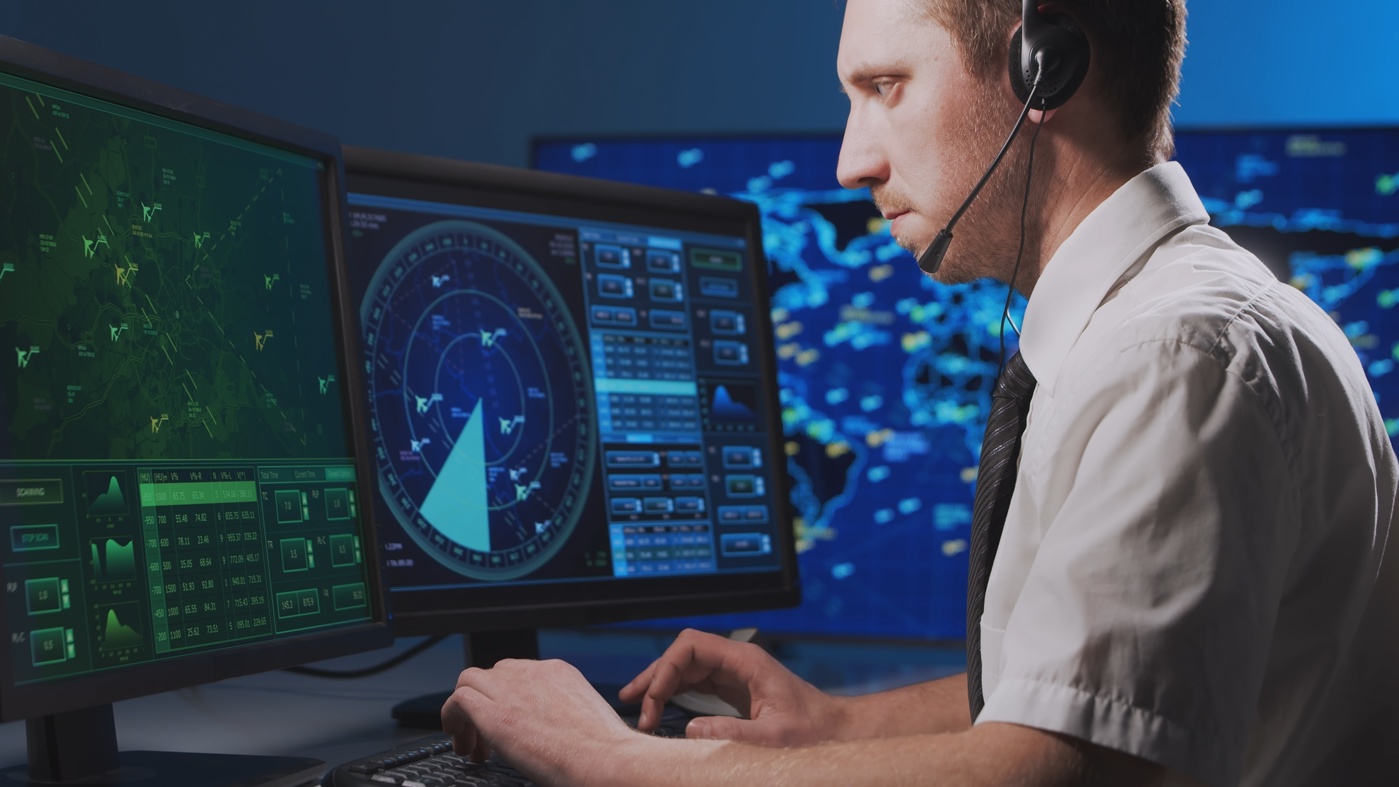What does the everyday working life of air traffic controllers with an HF diploma look like?
General job description:
The "Air Traffic Controller HF" course described here is the training course that prepares future air traffic controllers for work in the tower or in air traffic control.
Air traffic controllers ensure that every aircraft in their sector of responsibility maintains the prescribed minimum distance to the next aircraft. To this end, they issue instructions to the pilots regarding altitude, speed and course and check that the instructions are carried out. From the control tower, they direct the taxiing maneuvers, take-offs and landings of the aircraft. This also includes monitoring and accompanying small aircraft and helicopters, which fly according to visual flight rules and must be integrated into the instrument flight traffic around the airfield. In the approach control service, they guide the aircraft in the climb phase to the airways in the upper airspace and the approaching aircraft leaving the airways down to the airport. If there is too much traffic, they can direct aircraft into holding patterns. Working in the Area Control Center, air traffic controllers monitor aircraft movements in the airspace above Switzerland and neighboring countries. And with additional training, they can work for the Swiss Air Force and monitor military air traffic.
Fields of work and tasks:
Each of the following fields of work is considered a specialization for which a licence from the Federal Office of Civil Aviation FOCA is required. The air traffic controller can be deployed in one or more fields of work depending on the specialization and corresponding licence.
| In the tower |
- Monitoring taxiing maneuvers, take-offs and landings at the airport
- Monitoring air traffic in the control zone with a radius of around 20 km around the airport
- Monitoring and directing small aircraft and helicopters arriving and departing at the airport
|
| In the approach/departure service (Approach) |
- Monitoring of arriving and departing aircraft within a radius of 60 km around the airport
- Control of ascending and descending flight movements
- directing aircraft waiting to land into holding patterns if necessary
|
| In Area Control Centers |
- Control of airspace over Switzerland and parts of neighboring countries
- Monitoring and organization of air traffic at altitudes of 2.1 km to 20 km
- This service must be maintained around the clock
|
| In the military operations center |
- Tactical Fighter Controllers (TFCs) are civilian air traffic controllers who monitor and manage military air traffic and tactical missions
|
Note: The distribution of tasks (weighting and frequency) may vary depending on the task profile/job profile or function and company).

